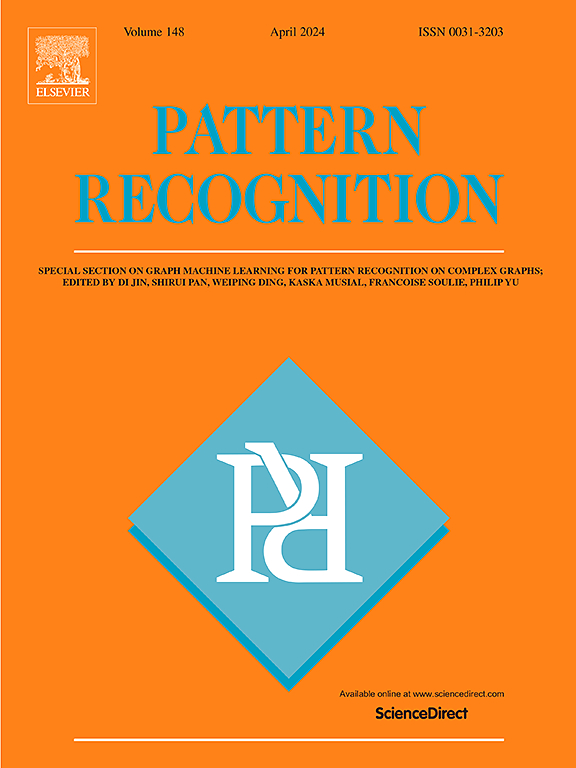通过块稀疏投影学习提高鲁棒特征选择的噪声容忍度
IF 7.6
1区 计算机科学
Q1 COMPUTER SCIENCE, ARTIFICIAL INTELLIGENCE
引用次数: 0
摘要
特征选择(FS)通过识别高维数据中的信息特征在鲁棒表示学习中起着至关重要的作用。然而,噪声的存在会导致特征的错误识别和扭曲数据表示。现有的鲁棒特征选择算法通常会丢弃有噪声的特征,从而导致潜在有益信息的丢失。此外,这些方法往往受到难以调整稀疏正则化参数的阻碍,进一步影响泛化。为了解决这个问题,我们提出了一种提高鲁棒特征选择(NTRFS)的噪声容忍度的方法,该方法在选择过程中主动识别和利用有益的噪声来增强鲁棒性。具体来说,NTRFS将块稀疏投影学习与1,1范数最小化相结合,增强了模型对噪声的鲁棒性,同时通过利用噪声的信息方面保留了关键特征。此外,通过将异常估计与自适应加权相结合,NTRFS利用耐噪声信息促进类原型的发现,并根据每个特征的信息显著性调整其权重。此外,提出的l2,0范数约束块稀疏投影学习模块通过利用数据流形中的局部几何关系来提高判别能力,而不需要正则化参数调整。最后,针对非凸迹比和np硬块稀疏性问题,提出了一种保证收敛的高效迭代优化算法。在几个真实数据集上的实验结果表明,NTRFS通过利用噪声增强了鲁棒性,提高了分类性能,优于先进的鲁棒FS方法。本文章由计算机程序翻译,如有差异,请以英文原文为准。
Improve noise tolerance of robust feature selection via block-sparse projection learning
Feature selection (FS) is crucial in robust representation learning by identifying informative features within high-dimensional data. However, the presence of noise can lead to the misidentification of features and distort data representation. Existing robust feature selection algorithms typically discard noisy features, leading to the loss of potentially beneficial information. Additionally, these methods are often hindered by the difficulty of tuning sparse regularization parameters, further affecting generalization. To address this, we propose a method for improving the noise tolerance of robust feature selection (NTRFS), which actively identifies and exploits beneficial noise during the selection process to enhance robustness. Specifically, NTRFS incorporates block-sparse projection learning with -norm minimization, enhancing the model’s robustness to noise while preserving key features by leveraging the informative aspects of noise. Furthermore, by integrating anomaly estimation with adaptive weighting, NTRFS utilizes noise-tolerant information to promote the discovery of class prototypes, adjusting the weight of each feature based on its informative saliency. Additionally, the proposed -norm constrained block-sparse projection learning module enhances discriminative power by exploiting local geometric relationships in data manifolds, without requiring regularization parameter tuning. Finally, to tackle the non-convex trace ratio and NP-hard block sparsity problems, we propose an efficient iterative optimization algorithm with guaranteed convergence. Experimental results on several real-world datasets show that NTRFS enhances robustness and improves classification performance by leveraging noise, outperforming advanced robust FS methods.
求助全文
通过发布文献求助,成功后即可免费获取论文全文。
去求助
来源期刊

Pattern Recognition
工程技术-工程:电子与电气
CiteScore
14.40
自引率
16.20%
发文量
683
审稿时长
5.6 months
期刊介绍:
The field of Pattern Recognition is both mature and rapidly evolving, playing a crucial role in various related fields such as computer vision, image processing, text analysis, and neural networks. It closely intersects with machine learning and is being applied in emerging areas like biometrics, bioinformatics, multimedia data analysis, and data science. The journal Pattern Recognition, established half a century ago during the early days of computer science, has since grown significantly in scope and influence.
 求助内容:
求助内容: 应助结果提醒方式:
应助结果提醒方式:


